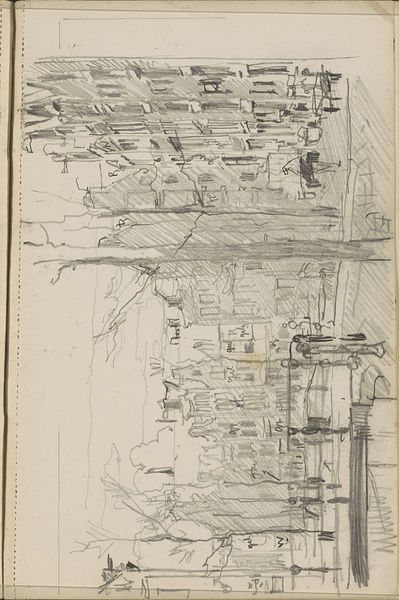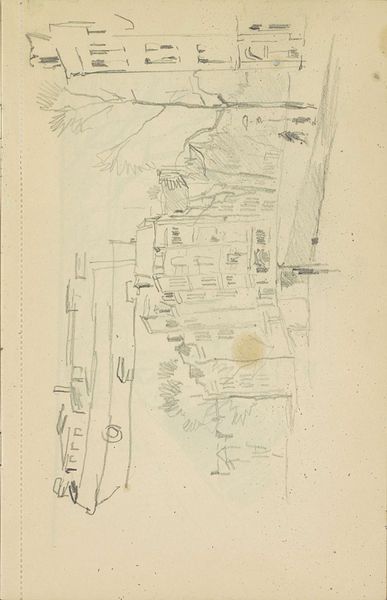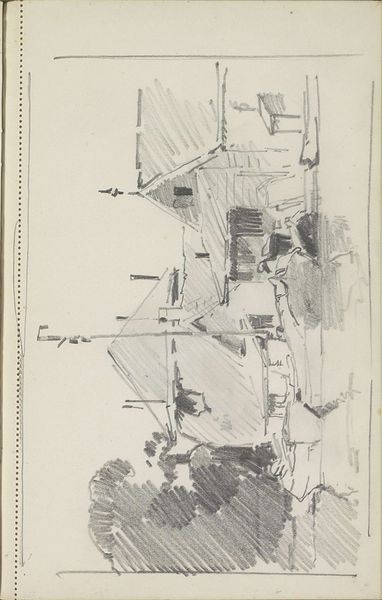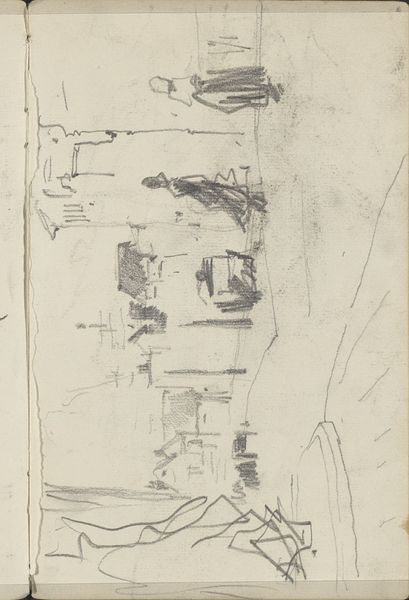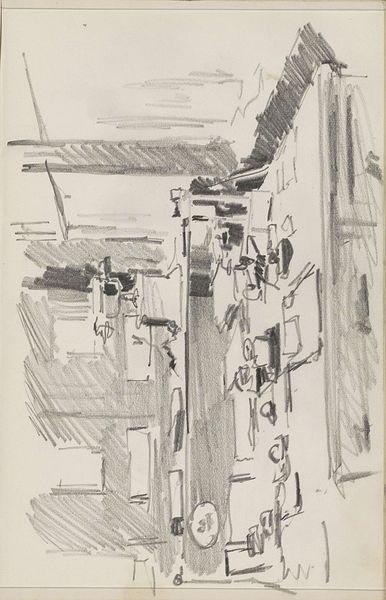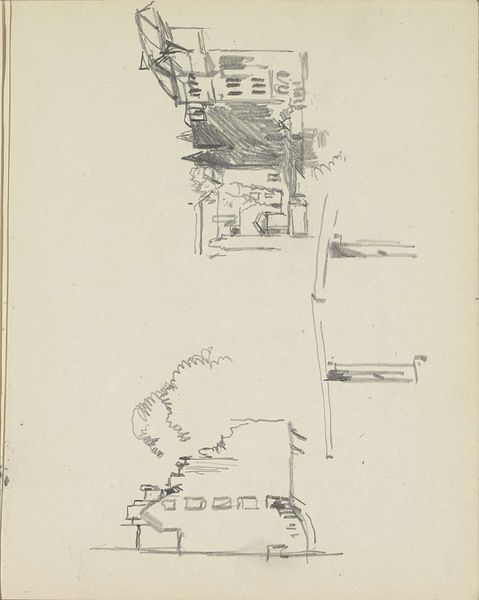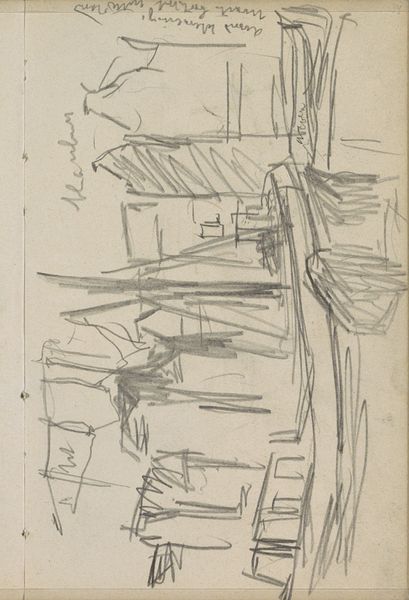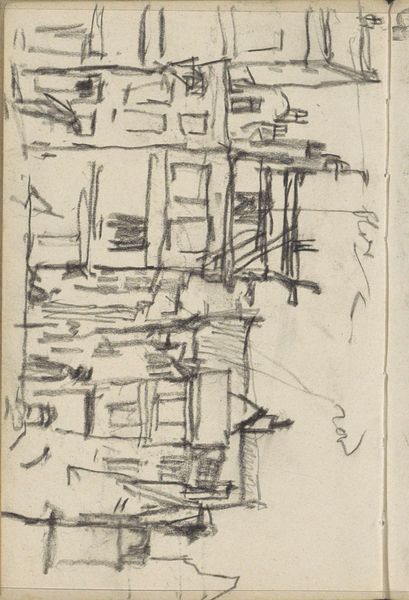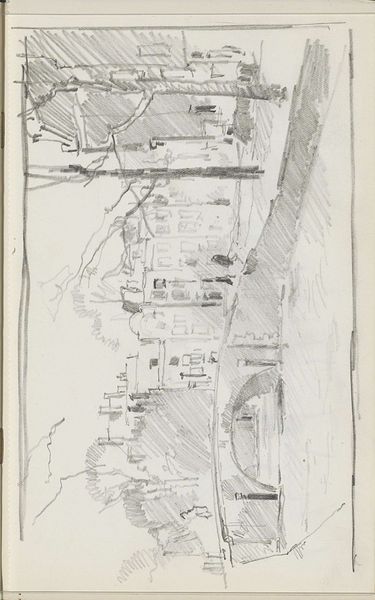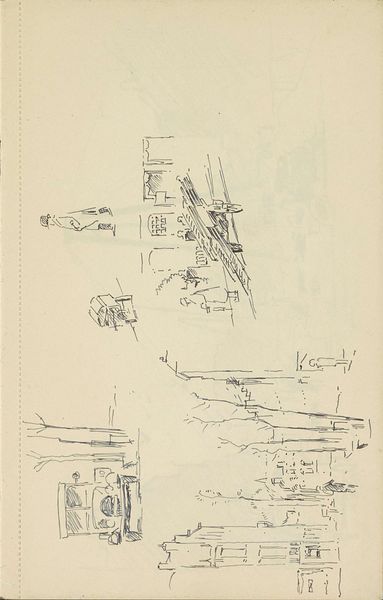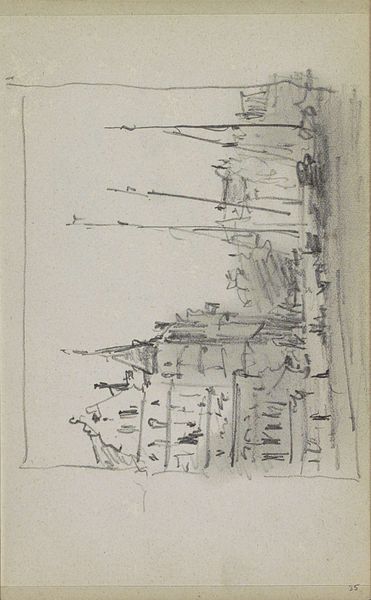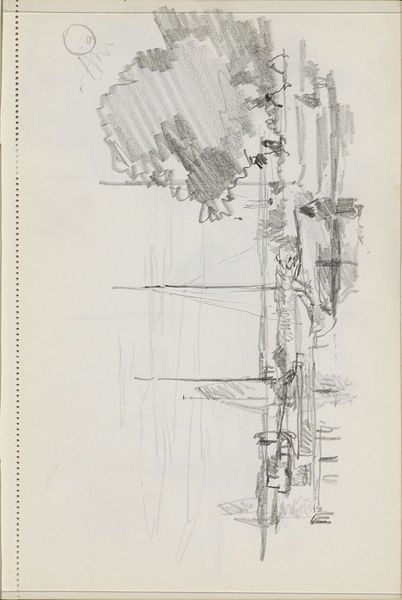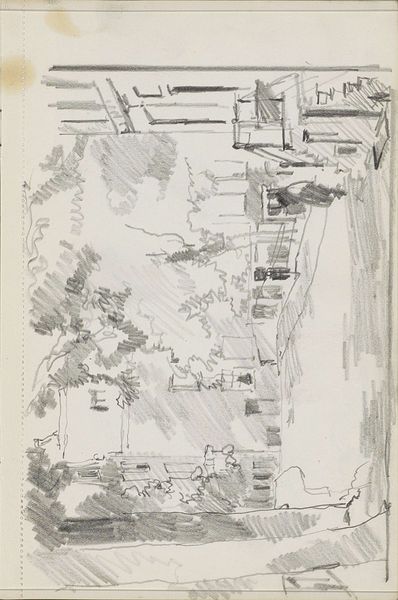
Copyright: Rijks Museum: Open Domain
Editor: We're looking at "Aanlegplaats voor boten in een stad," or "Landing Place for Boats in a City" by Cornelis Vreedenburgh, dating from 1890 to 1946. It's a pencil drawing, and the sketch-like quality makes me think about capturing a fleeting moment in time. What strikes you about it? Curator: What I find compelling is the way Vreedenburgh uses this "fleeting moment" to interrogate urban development and its relationship to labor and leisure. Think about who this city *excludes*. The docks and boats are present, hinting at commerce and connection. But consider the limited perspectives offered here; Whose city is being represented and whose is absent? Editor: That's a really interesting point. I hadn’t considered who might be missing from the picture. The sketch feels very…impersonal, almost like an architectural rendering. Curator: Exactly! It echoes the detached perspective often used when city planners were making decisions impacting marginalized communities. The seeming neutrality of realism is never truly neutral, is it? By capturing only certain fragments, this "realistic" depiction actually silences other voices, obfuscating potential social complexities embedded within that waterside view. Who has the right to navigate these waterways? Who is granted access to the opportunities presented by this port? Editor: So, even a simple landscape drawing can open up questions about power and access? Curator: Absolutely. Art like this forces us to contemplate urban spaces, not merely as pretty scenes, but as sites of complex socio-economic and political negotiations. It encourages us to unpack historical hegemonies implicit in what has been displayed, or consciously omitted. Editor: I never would have looked at it that way on my own. Thank you for that. Curator: My pleasure. Art has the profound ability to reveal societal fault lines hiding beneath the surface, so it becomes crucial to continuously unpack underlying ideologies and historical stratifications of artworks such as this seemingly straightforward city scene.
Comments
No comments
Be the first to comment and join the conversation on the ultimate creative platform.

